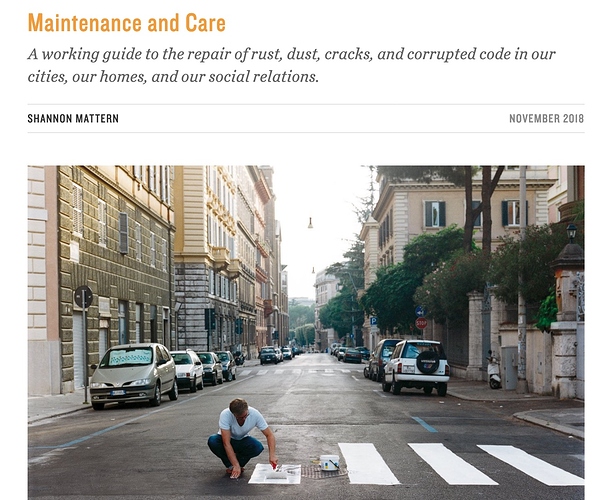“What we really need to study is how the world gets put back together, the everyday work of maintenance, caretaking, and repair… Who gets cared for at home, and who does that tending and mending?”
This piece in Places Journal by New School design anthropologist Shannon Mattern is so essential and restorative. I find myself almost sighing in relief each time I re-read this essay, which reminds us that a world breaking down in so many ways still works: because of the quiet labor of maintenance and care undertaken by countless people.
Rust, Dust, Cracks, Corruption: as we travel with Mattern through these different scales and forms of care, what emerges is something like an everyday ethics of environmental repair, arising not from the commitments of self-identified environmentalists (though many here would certainly think of themselves that way) but instead from the practical demands of daily life in particular contexts.
Mattern rightly insists that the aim is not to romanticize or glorify these practices of care, which are riven with inequality, and often compulsion. Instead, we are reminded of the presence, and the necessity, of an infrastructural ecology: “Maintenance at any particular site, or on any particular body or object, requires the maintenance of an entire ecology: attending to supply chains, instruments, protocols, social infrastructures, and environmental conditions.”
The essay has heady implications for any intended practice of ecological design, which must necessarily enfold some vision of environmental maintenance. From Mattern, “three enduring truths: (1) Maintainers require care; (2) caregiving requires maintenance; and (3) the distinctions between these practices are shaped by race, gender, class, and other political, economic, and cultural forces.”
